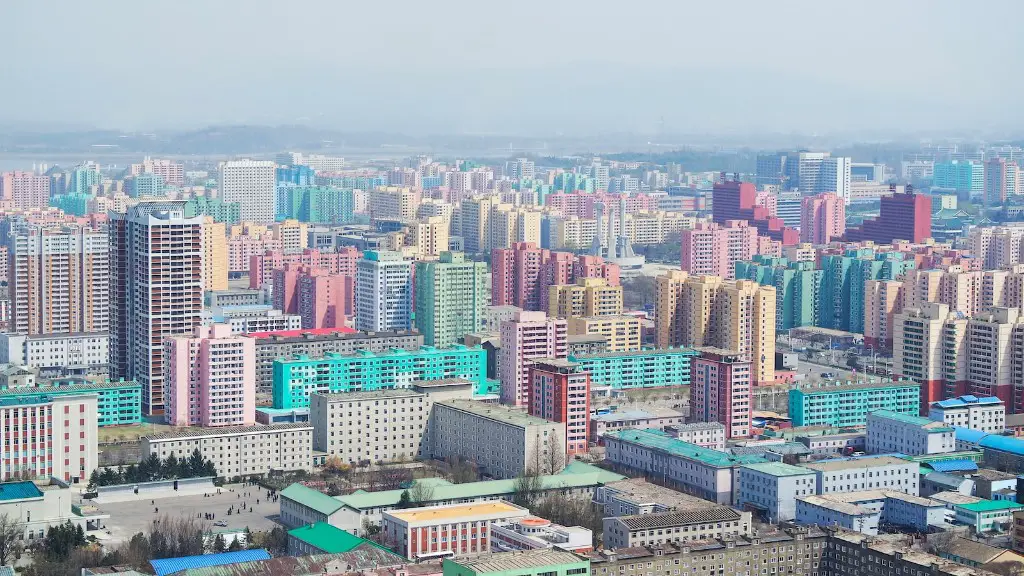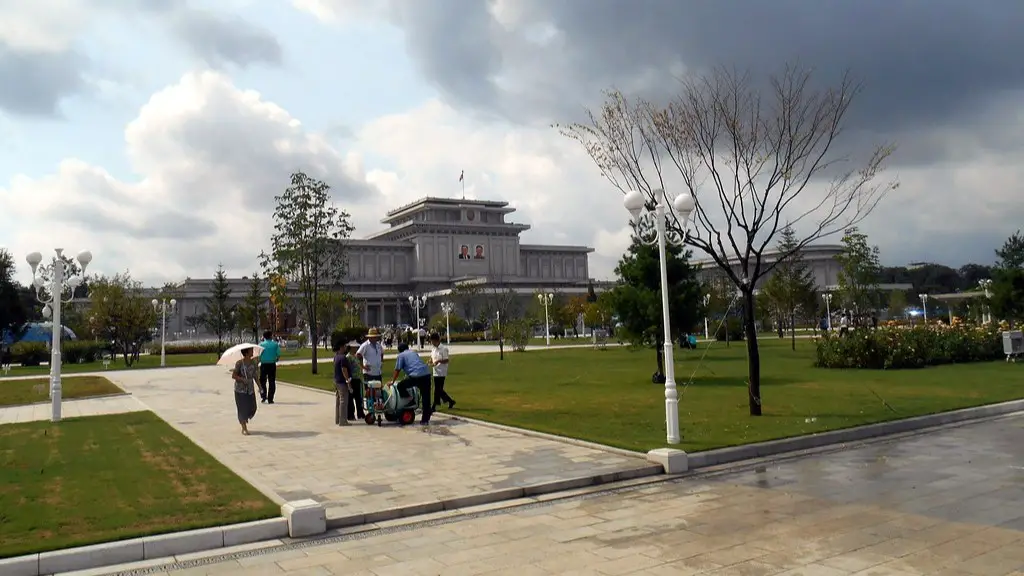Introduction
The Korean War, fought from 1950 – 1953, is often mistakenly referred to as the “Forgotten War.” In reality, this famous yet devastating war was a crucial part of the overall Cold War ideological struggle. North Korea, backed by the Soviet Union, charged into South Korea in 1950, prompting the United Nations to intervene. The North Koreans attempted to absorb South Korea into a newly unified communist state. Consequently, the United Nations forces, led primarily by the United States, joined the South Korean forces to protect their land and values. This article will examine the various factors that led to the outbreak of the Korean War aswell as the presence of the United Nations in the conflict.
Background Information
At the end of the Second World War, Korea was divided into two separate countries, North and South, in 1945. Under various United Nations resolutions, the Soviet Union occupied the northern portion and the United States occupied the southern portion. This assignment of power was intended to be temporary. Both occupiers were meant to work together in establishing a democratic government for the entirety of Korea. Unsurprisingly, the two powers were unable to come to an agreement. As a result, the United Nations was unable to mediate peace, and North and South Korea were officially divided in 1948.
Relevant Data and Perspectives from Experts
Given the vast differences in political orientation, North and South Korea had tensions for much of the two year period after their divide. In June 1950, Kim Il Sung of North Korea and his Soviet-backed forces launched an invasion and sent 100,000 troops across the 38th parallel. According to Professor Leonard Hochberg of Tufts University, “This was an unexpected move and caught the UN forces off guard and unprepared to respond.” This unprovoked attack became the catalyst for a major international conflict.
The UN Security Council responded immediately, voting with an overwhelming majority (7 to 0) to authorize military action to repel North Korea’s “armed attack.” The United States was one of the first countries to sign on, sending almost two million soldiers to fight in Korea. The UN resolution essentially gave the US and its allies the green light to intervene in the Korean war. Professor Hochberg further explains: “The UN acted swiftly and the US stepped in to provide military assistance and thereby honor its commitment to defend the values of democracy and freedom.”
Insights and Analysis
From the perspective of the United Nations, the goal of their intervention in the Korean War was to protect South Korea and its citizens from aggressive North Korean forces. The UN forces viewed the war as a threat to regional stability and peace. In addition, the US saw this conflict as a way to ‘test’ the Soviet Union’s commitment to supporting the spread of communism. The US wanted to show its allies and the world that it was serious about preventing the spread of Communism. As Professor Hochberg explains: “The US wanted to demonstrate to the world its commitment to defending democracy and opposing communist expansionism.”
A Look at the United Nations Presence
In response to the North Korean incursion, the United Nations Security Council authorized an international force to investigate the situation and take appropriate action to “repel the armed attack and restore international peace and security to the area.” As such, 16 nations contributed forces to the UN effort. The United States led the way and provided the bulk of the fighting force. The UN forces also provided vital financial and logistical support to the South Korean forces. In the end, the presence of the UN forces proved to be a vital source of strength in the Korean War.
International Impact
The presence of the UN forces in the Korean War was of immense importance to the international community. The war provided an opportunity for the UN to demonstrate its ability to respond to conflicts and protect the rights of its citizens. More importantly, the war proved that the UN was capable of maintaining global peace and security. This was an important step in the evolution of international law and the role of the United Nations in international affairs.
History of the Conflict
The story of the Korean War is a long and complicated one and has been heavily debated in historical circles. The North Koreans, supported by the Soviets and Chinese, pushed south with massive invading forces and quickly gained key strategic territories. By the end of 1950, the North Korean forces were driven back to the 38th parallel and control of the peninsula was divided between the two states.
The tides of the war shifted again in 1952 when the UN forces launched a counteroffensive that pushed the North Koreans back across the 38th parallel. The fight was long and hard, but by 1953 the UN forces had regained their positions and the ceasefire was officially signed. Despite the victory, 4 million people had been killed or wounded and an entire generation of Koreans had been forever changed by the conflict.
Ongoing Battle
Shortly after the ceasefire was signed in 1953, the two sides began negotiating towards a final settlement. However, no satisfactory agreement was ever reached and the two sides remain in a state of uneasy tension to this day. In the decades since the war, there have been one too many instances of armed conflict between North and South Korea, leading to continued instability and tension in the region.
Psychological Impact
The cost of the Korean War was not only measured in life, but also in its psychological effects on the people involved. The war had a huge impact on both North and South Koreans, leaving deep scars in the memories of those affected. For many, these memories are still fresh, reminding them of the terrible costs of war. The stories of those men and women are a powerful reminder of the need to seek peace and avoid future military conflict.
Cost of the War
The cost of the Korean War was immense, both in terms of human life and economic costs. According to some estimates, the war cost the United Nations more than $2.5 billion in military costs. In addition, South Korea spent an estimated $12 billion in direct and indirect costs due to the conflict. South Korea was also left with millions of refugees, displaced as a result of the war.
Conclusion of Conflict
The Korean War lasted from 1950 until 1953 and was a huge conflict in international law. The war saw the involvement of 16 countries and cost an estimated 4 million lives and billions in economic costs. The war marked a shift in the ideological struggle between communism and freedom and served as a strong reminder of the devastating costs of war. To this day, the conflict between North and South Korea remains unresolved and continues to be a source of tension in the region.


